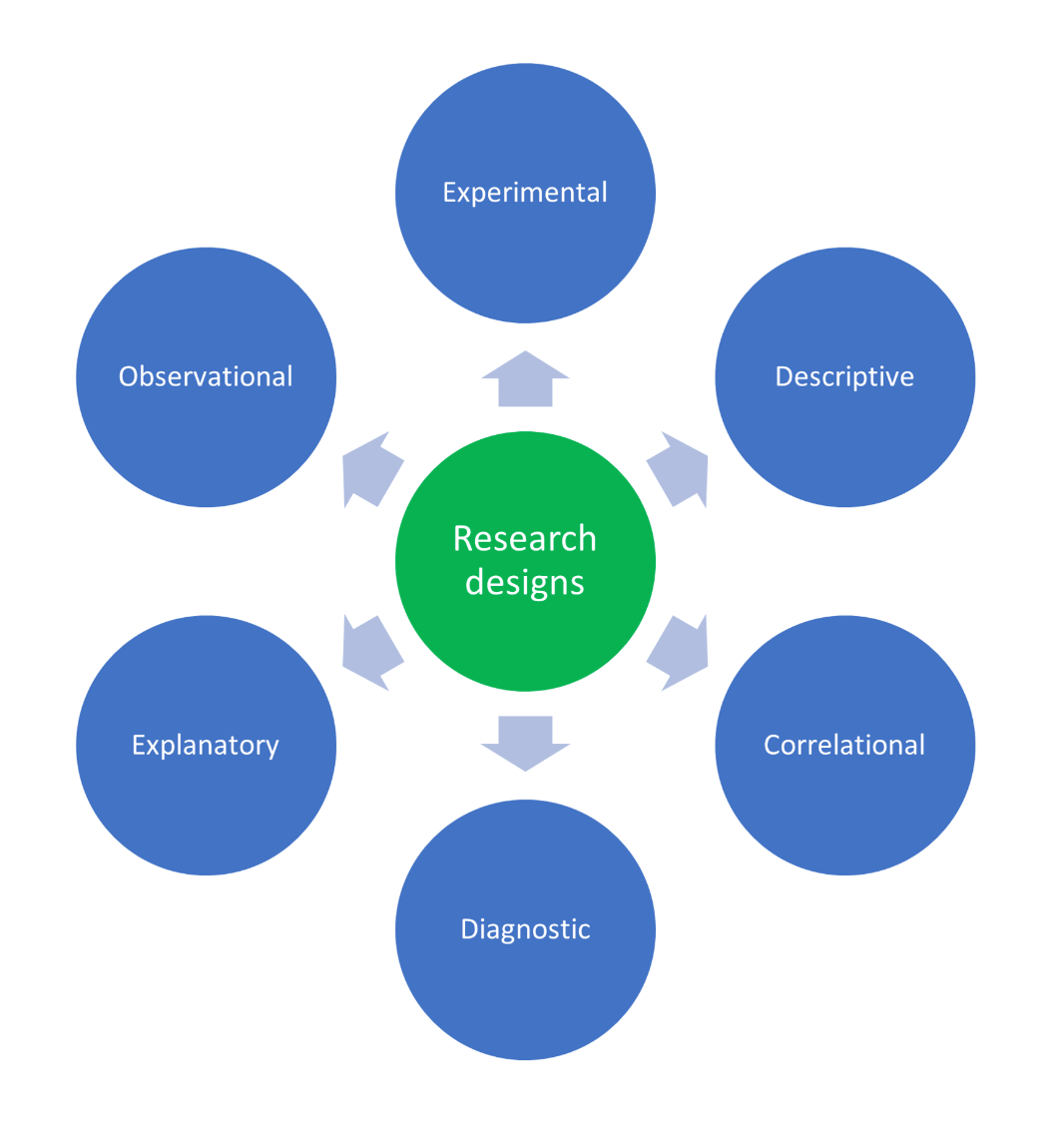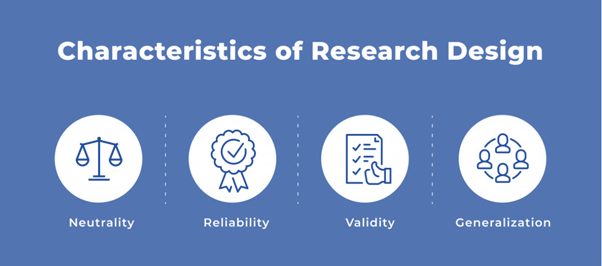All You Need To Know About Research Design: Types And More
Table of Contents

- jaro education
- 14, October 2024
- 1:00 pm
A research design is a significant part of any study as it is the roadmap of the study that shows the manner in which data is going to be collected, measured and analysed. First, it offers a guide to the researchers so that the research would be effective and valid, and the researchers’ posed questions could be solved methodically. Irrespective of qualitative, quantitative, or even combined research, the knowledge of different research paradigms and their uses is important for creating efficient and accurate results.
This guide focuses on the main types of research design as well as their significance. It provides information on the selection of the ideal concept of research design for any research study.
What is Research Design?
Research design is defined as the overall plan of research activities that a researcher adopts to facilitate an effective conduct of research. It benefits researchers focusing on the applicability of the chosen methods to the research object, correctly positioning the study for accurate and valid results. The choice of design solves the research problem and offers a coherent model of data gathering and analysis.
The research design is informed by the research problem and, therefore, determines the method of data collection, measurement, and analysis. It identifies the instruments and procedures to be employed for the research irrespective of whether the study is experimental, descriptive or survey-based.
Types of Research Design
The top six types of research design are given below:

1. Quantitative Research Design
Quantitative research design concerns measurement and the use of numbers and statistics in search of co-relationships or hypotheses between variables. It is operational research mainly based on quantitative data, and it most often uses structured instruments such as questionnaires, tests, experiments, and observation to gather quantitative data. It aims to measure variables, explain trends and analyse relationships or causations within a given research area. The usual forms of quantitative research include descriptive, experimental, correlational, diagnostic and explanatory research designs. The data gathered is quantitatively analysed and is mostly expressed in numerical terms so that the conclusion made is well-founded. This type of research is used extensively in economics, medicine and ecology.
2. Qualitative Research Design
Qualitative research design covers data in the form of words and observations. This implies the function of moving beyond the behavioural and mentalistic concern with human activities and social relations. Data collected from research include interviews, focus groups, direct observation, and interactions in the natural setting. A qualitative method is used and commonly includes narrative analysis, thematic analysis, or grounded theory to identify patterns and meanings. Qualitative research utilises inductive reasoning in synthesising data, unlike quantitative research. This design is often applied in sociological, linguistic and anthropological studies if the aim of research is to study the subjectivity of human experiences, often in relation to culture and society.
3. Experimental Research Designarch Design
An experimental research design is adopted in order to establish a cause-effect relationship. Here, the researcher manipulates one set of variables, known as the independent variable, while keeping the other variable, the dependent variable, almost constant. For example, in a hypothesis to examine the effects of different kinds of fertilisers on plant growth, one will divide plants into categories according to the fertiliser used, after which the growth of the categorised plants will be compared. Even though suitable for determining causality, experimental paradigms might have problems in sensitive medical research.
4. Correlational Research Design
This kind of research design studies the extent of the connection between two or more variables without influencing them. Such research assists in determining whether variations in one variable are related to variations in another. For example, research could be conducted on the link between the level of exercise and the level of health among the participants. While the method of correlational research is rather valuable when investigating relations between variables, it is essential to remember that such a method does not allow for causality establishment.
5. Descriptive Research Design
Descriptive research design involves a collection of information to describe the current state or behaviour, or conditions of an event or a phenomenon without trying to change or alter any variable. It gives information about an event or condition at a given time without showing interactions or why they are so. For example, when administering simple questionnaires to establish the level of dependence of children and adolescents on smart devices, it would only show the existence of the problem but without an explanation of why or how it happens.
Characteristics of Research Design
The four main characteristics of research design are reliability, neutrality, validity, and generalisation:

*surveypoint.ai
- Reliability: A good research design enables the results to be obtained in a way that can be repeated if similar conditions are applied. This means that if a study is repeated, say several times, the results produced should be close or even the same. Reliability is therefore achieved by asking the right questions and using recognised procedures to produce consistent and reliable results.
- Neutrality: The ability to observe neutrality in the research is a critical factor in ensuring the reduction of bias while conducting the research. Reducing bias makes the results as accurate as possible, and therefore, any conclusions drawn are relevant. However, even in cases when researchers make assumptions, a good study minimises the impact of the assumptions, which, in turn, enhances the credibility of the study.
- Validity: Validity is the use of the right instruments to quantify the intended goals properly. The stated or implied objectives of a piece of research must be met through a valid design of the research. For example, the application of questions when developing the initial study structure helps in the exclusion of invalidity and ensures that the results are relevant and align with the overall goal of the research study.
- Generalisation: A good research design also makes it possible to generalise results to the wider population, even beyond the test group. This indicates that while using the results, the moderator can apply them in other settings/contexts or with other subjects and still get statistical validity. The generalisations of the research design are a gain to the study as they can be of relevance to many areas and can therefore impact society.
Elements of Research Design
If you read a well-designed research study, you will notice that every part fits into the next, hence creating a clear and meaningful picture. To find out more, read about these elements of research design to guarantee your work is properly framed, meaningful, and effective in producing valuable information.
1. Clear Research Objectives
The research objectives act as the guiding start for your whole research. They describe what one expects to accomplish and provide directions for the study. When aims are precise, you avoid straying too far, maintaining a constant line of sight from your research questions and methods to your analysis of your goals
2. Clear And Focused Research Questions and Hypotheses
Research questions and hypotheses form the map of where you want to get to before you begin the journey. They give a description of what you want to explore and predict while providing direction and clarity. Specific research questions and hypotheses contribute much to the focus and application as you move toward data gathering and analysis.
3. Selection of Methodology
Like any job, the selection of the methodology is like choosing the right tool to accomplish the task. On this basis, quantitative approaches are most suitable for collecting countable data, whereas qualitative approaches are more appropriate for capturing human experiences and interpretations. Where quantitative and qualitative research methodologies are used hand in hand, they can give a rounded view of the area of study.
4. Participant Selection
Participant selection is vital for producing valid results. The sample that you take should represent your study. Selecting the correct random sample methods and identifying the right size of the sample guarantees that your conclusions are not only correct but also applicable.
5. Practical Methods of Data Gathering
It focuses on gathering the basic components of your research data. Choose the right data collection technique, such as surveys, interviews, observations or experiments. This means you are likely to collect data directly related to research objectives.
6. Original and Valid Research Instruments
Even the questionnaires to be used or the interview guides that are to be employed have to be well crafted to ensure that accurate data can be collected. Accurate instruments are free from bias, simple, and have the requisite details for your research practice.
7. Research Framework Development
A research plan is a step-by-step process of a particular study showing how participants would be recruited and how data would be analysed. This procedure keeps your work systematic right from the doorstep to the final step of research and aims to ensure all steps are followed as required.
8. Qualified Analysis of Data and Information
Data analysis is a process where all the collected fragments converge. Depending on the type of research problem, the tools used to analyse data help identify patterns and relationships and draw insights to answer the research questions and support hypotheses
9. Ethical Considerations
In many forms of research, ethical principles are the basic foundations of carrying out research projects. These principles must be upheld in the research subjects.
Final Thoughts
Research design can be described as the framework within which any study can be framed by providing a blueprint of how data will be collected, measured and analysed. Furthermore, by adopting the appropriate research design, the researchers can work towards having credible research findings that are highly relevant. As a brief as well as detailed overview of types, characteristics and indispensable components of research designs, the guide has provided you with the knowledge necessary for constructing sound frameworks.
Jaro Education is proud to present a range of higher-level courses and certifications that help you improve your research abilities. From entry-level research methods or techniques to advanced specialised topics, Jaro Education offers programmes designed by popular institutions that provide intensive learning as well as practicality.
Sign up for Jaro Education now and improve your research capabilities for the next big step in your academic or professional career!
Frequently Asked Questions
Research design can be described as the overall working plan to determine the most suitable approach to gathering data, measuring and analysing data within a given research. It is important since it makes the whole research process productive and beneficial.
Research designs can broadly be categorised into three based on approach, namely: quantitative, qualitative and combined research designs. There are subtypes that include descriptive research, correlational research, experimental research, and diagnostic research, all of which are performed for different purposes and methods in research.
The research design in any study depends on the aim and questions as well as the type of variables used. For the measurement of data quantity and relationships, a quantitative design is suitable. When it comes to discovering and understanding more concepts and patterns of social phenomena, qualitative design is most effective.
In the case of the current study, key features of a well-designed research study are reliability, neutrality, validity and generalisation.









